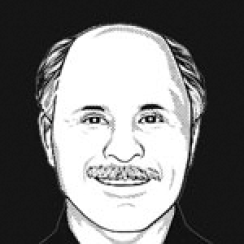This has been a tough year for macro managers, many of whom have been plodding along and lagging the rest of their peers.
The HFRI Macro Index, produced by Chicago-based Hedge Fund Research Group (HFR), lost 0.35 percent in April, putting it up just 0.34 percent for the year. This compares with a 4.42 percent gain for the average hedge fund in HFR’s database and 6.33 percent for the Equity Hedge Fund index.
Texas-based hedge fund research company Hennessee Group’s database fared slightly better, with the macro funds inching up 0.10 percent in April and 0.68 percent for the year. It notes the group heavily benefited from long positions in the Euro-Bund and 10-year U.S. Treasury note.
Why are macro funds otherwise slogging along this year?
For one thing, most macro managers do not load up on stocks, which have so far been the asset class of choice this year despite the recent week’s setback. These are the guys, remember, who bet on the direction of interest rates and currencies, among other things, rather than stock pickers.
Also, macro funds need directional change, and most managers have not been able to latch on to long trends. In addition, many of them have been pulling back risk in a meaningful way, lowering their overall exposure.
“Macro has experienced more muted gains as a function of weakness in currency and commodity exposures and less direct exposure to equity markets,” says Ken Heinz, president of HFR in an e-mail message to Institutional Investor.
Despite the group’s anemic gains, the Big Three of the macro world have actually been among the best performers. Paul Tudor Jones II’s Tudor BVI Global Fund was up 0.76 percent through April 30 after a rough April, when it lost 2.11 percent, Louis Bacon’s Moore Global Investments was up 2.09 percent through April 26 while Andrew Law’s Caxton Global Investment was up 1.46 percent through April 30 (the most recent dates for which data is available).
This is not substantially lower than the equity funds.
The performance of macro funds and the superstars in particular was especially important this year, as interest rates and currencies have seen pretty good gains sharply reverse themselves in a matter of days.
“They know when to protect capital,” says Ernest "Trip" Kuehne III, founder and senior managing partner of Double Eagle Capital Management, whose fund of funds has investments with Tudor BVI, Moore Global Investments as well as Moore Macro Managers, a multistrategy fund. “They don’t take unnecessary risk,” he points out.
Kuehne is not the only investor who appreciates the role of macro managers in general. In the first quarter, $7.8 billion in net new capital flowed into the strategy, second only to the $12.4 billion allocated to relative value. In contrast, investors redeemed $2.9 billion from equity hedge and $940 million from event driven.
What’s more, since the end of 2008 — the height of the financial crisis — macro has grown by 66 percent compared with over 50 percent for the overall hedge fund industry, according to HFR.
Over the long haul, macro has compounded at 12.6 percent, making it the second-best performer among HFR’s four major strategy groups, behind equity hedge with an annualized gain of 13.1 percent.







